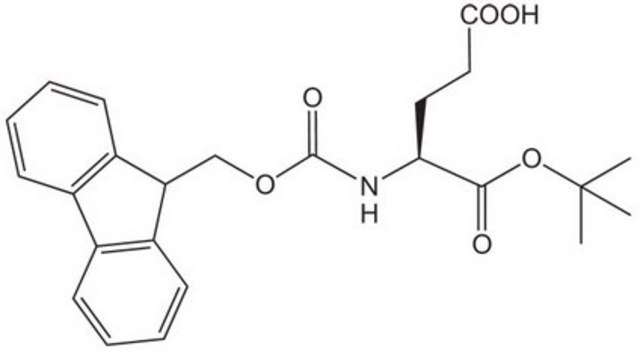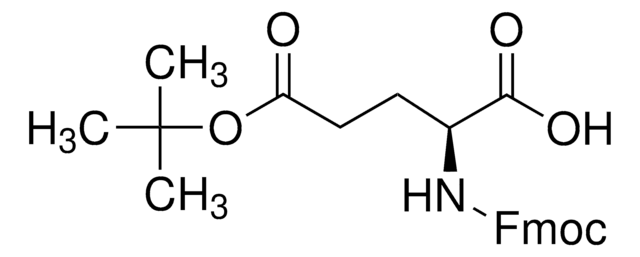推荐产品
表单
powder
包装
pkg of 1 × 10 mg (890701P-10mg)
pkg of 1 × 25 mg (890701P-25mg)
制造商/商品名称
Avanti Research™ - A Croda Brand
脂质类型
transfection
cationic lipids
运输
dry ice
储存温度
−20°C
SMILES字符串
O=P(OCC[N+](C)(C)C)(OC[C@]([H])(OC(CCCCCCCCCCCCC)=O)COC(CCCCCCCCCCCCC)=O)OCC.[Cl-]
InChI
1S/C38H77NO8P.ClH/c1-7-10-12-14-16-18-20-22-24-26-28-30-37(40)43-34-36(35-46-48(42,44-9-3)45-33-32-39(4,5)6)47-38(41)31-29-27-25-23-21-19-17-15-13-11-8-2;/h36H,7-35H2,1-6H3;1H/q+1;/p-1/t36-,48?;/m1./s1
InChI key
KWNHEFTXCQPKSD-CZDORXJLSA-M
一般描述
1,2-dimyristoyl-sn-glycero-3-ethylphosphocholine (14:0 EPC) is an acyl cationic lipid. O-alkyl phosphatidylcholines constitute the first chemically stable tri-esters of biological lipid structures and the first cationic derivatives of phospholipids consisting entirely of biological metabolites linked with ester bonds. The lipid has low toxicity and is biodegradable.
应用
1,2-dimyristoyl-sn-glycero-3-ethylphosphocholine (14:0 EPC (Cl Salt)) is suitable for use in liposome formulations.
生化/生理作用
Synthetic cationic lipids serve as non-viral gene delivery agents. Change in the hydrocarbon chain of phosphatidylcholine (PC) derivatives affects transfection efficiency. 1,2-dimyristoyl-sn-glycero-3-ethylphosphocholine (14:0 EPC) aids in hydration during the formation of liposomes.
包装
5 mL Clear Glass Sealed Ampule (890701P-10mg)
5 mL Clear Glass Sealed Ampule (890701P-25mg)
法律信息
Avanti Research is a trademark of Avanti Polar Lipids, LLC
储存分类代码
11 - Combustible Solids
WGK
WGK 3
Paria Parvizi et al.
International journal of pharmaceutics, 461(1-2), 145-156 (2013-12-04)
This study seeks correlations between the molecular structures of cationic and neutral lipids, the lipid phase behavior of the mixed-lipid lipoplexes they form with plasmid DNA, and the transfection efficacy of the lipoplexes. Synthetic cationic pyridinium lipids were co-formulated (1:1)
Emile Jubeli et al.
European journal of medicinal chemistry, 125, 225-232 (2016-09-24)
In this communication we describe the construction of four succinic-based cationic lipids, their formulation with plasmid DNA (pDNA), and an evaluation of their in vitro gene delivery into Chinese hamster ovarian (CHO-K1) cells. The cationic lipids employed in this work possess
William P D Goldring et al.
Bioorganic & medicinal chemistry letters, 22(14), 4686-4692 (2012-06-19)
The synthesis and in vitro evaluation of four cationic lipid gene delivery vectors, characterized by acyclic or macrocyclic, and saturated or unsaturated hydrophobic regions, is described. The synthesis employed standard protocols, including ring-closing metathesis for macrocyclic lipid construction. All lipoplexes
Kervin O Evans et al.
Chemistry and physics of lipids, 220, 49-56 (2019-02-24)
The capacity of molecules to inhibit oxidation is widely tested using liposomes as host matrices of the antioxidant molecule of interest. Spectroscopic assays are readily used for this purpose, specifically assays using 2,2'-azobis(2-methylpropionamidine) dihydrochloride (AAPH). In this work the effect
Rumiana Koynova et al.
The journal of physical chemistry. B, 111(27), 7786-7795 (2007-06-19)
Some mixtures of two cationic lipids including phospholipid compounds (O-ethylphosphatidylcholines) as well as common, commercially available cationic lipids, such as dimethylammonium bromides and trimethylammonium propanes, deliver therapeutic DNA considerably more efficiently than do the separate molecules. In an effort to
我们的科学家团队拥有各种研究领域经验,包括生命科学、材料科学、化学合成、色谱、分析及许多其他领域.
联系技术服务部门








